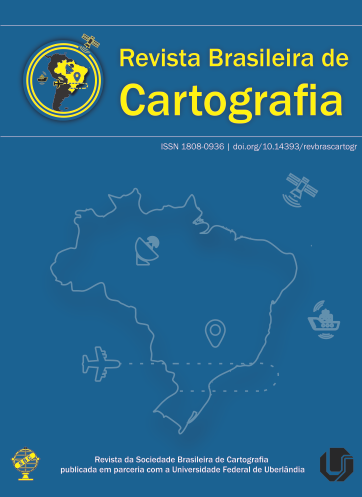Automation in the Change of Geodetic Reference Process and Coordinate Reduction in High Precision Positioning
Main Article Content
Abstract
The positioning in topographic and geodetic surveying with GNSS (Global Navigation Satellite System) receivers could be performed using commercial and free on-line service available on the internet. These determine the coordinates of the point of interest at epoch and geodetic reference frame of precise orbits, which in the post-processing GNSS data collected, are used and differ from the reference frame adopted for the Brazilian Geodetic System (SGB). In Brazil, only the frame SIRGAS2000 (epoch 2000.4) is applied to the coordinate determination. Therefore, it is necessary to change the reference frame and reduction of coordinate obtained from those services to the official geodetic frame adopted in the country. Thus, the computational tools to automation of procedures and report supply of the calculations, performed internally, contributes to students and users of the on-line service for post-processing GNSS data for positioning. The purpose of this study was to develop a software, named of MRefGeo, to make the change of geodetic reference frame and coordinate reduction as well as to validate the results of its use. In the MRefGeo, it is possible to choose the parameter available between the IBGE-PPP (Brazilian Institute of Geography and Statistics – Precise Point Positioning) or IERS/IGN (International Earth rotation and Reference systems Service/ Institut National de l'Information Géographique et Forestière) to change the referential and velocity models for the SIRGAS – VEMOS2009 and VEMOS2017. The experiments realized with use of MRefGeo showed that results are in agreement, at the millimeter level, with those provide by the ETRF/ITRF coordinate transformation on-line tool used in these operations.
Downloads
Metrics
Article Details

This work is licensed under a Creative Commons Attribution 3.0 Unported License.
Authors who publish in this journal agree to the following terms:
- Authors retain copyright and grant the journal right of first publication with the work simultaneously licensed under a Creative Commons Attribution License that allows others to share the work with an acknowledgment of the work's authorship and initial publication in this journal.
- Authors can enter into separate, additional contractual arrangements for the non-exclusive distribution of the journal's published version of the work (e.g., post it to an institutional repository or publish it in a book), with an acknowledgment of its initial publication in this journal.
- Authors are permitted and encouraged to post their work online (e.g., in institutional repositories or on their website) before and during the submission process, as it can lead to productive exchanges, as well as earlier and greater citation of published work (see "The Effect of Open Access").





